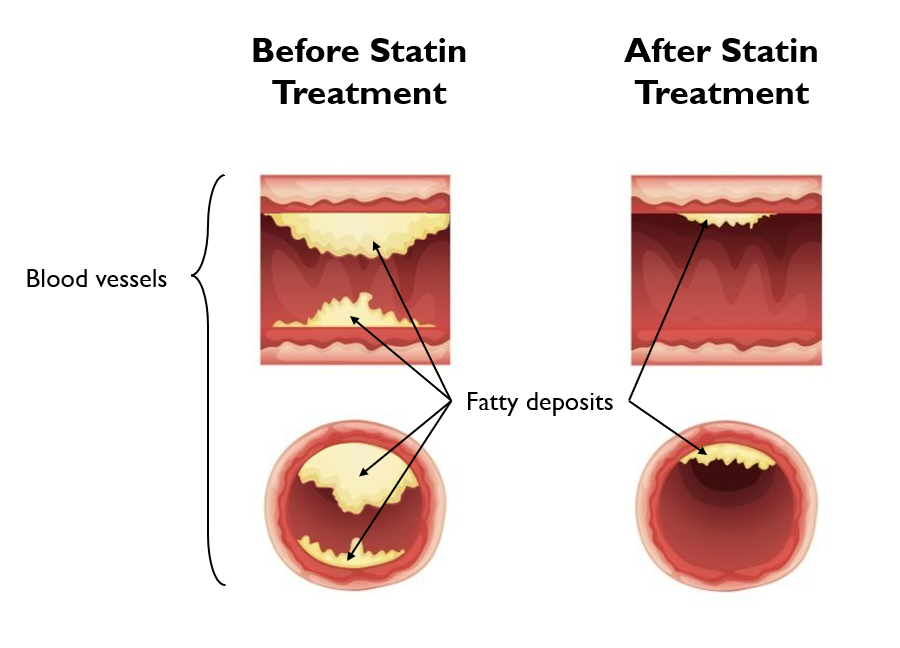Observational studies have demonstrated that total cholesterol is positively associated with ischemic heart disease and stroke rates and that this relationship is continuous as blood concentrations of cholesterol increase.1,2 Randomized controlled trials and meta-analyses that examined the effects of statin therapy versus controls have confirmed these findings and demonstrated the beneficial effects of statin therapy on the prevention and treatment of atherosclerotic cardiovascular disease (CVD).3
The Cholesterol Treatment Trialists (CTT) Collaboration was established to conduct meta-analyses of multiple large scale (at least 1,000 participants), long-term (two or more years) randomized controlled trials of lipid interventions.4 Largely focusing on statin therapy, the collaboration has analyzed data of over 175,000 individuals and published numerous results of their investigations. One CTT prospective meta-analysis that included 14 randomized trials of statins (total n=90,056) estimated that for each mmol/L (about 40 mg/dL) reduction in low density lipoprotein cholesterol (LDL-C), the risk of major vascular events (MVE) and vascular mortality was reduced by 21%.5 MVEs included myocardial infarction (MI), coronary death, need for revascularization, and fatal or non-fatal stroke. The risk of a MVE continues to be reduced by about 25% for each mmol/L reduction in LDL-C during each year after the first year that the statin continues to be taken.6
The absolute benefit of statin therapy for any given individual depends both on their absolute risk of future cardiovascular events and their absolute reduction in cholesterol.6 Data from early epidemiological studies and large cohort studies allowed experts to identify risk factors for the development of CVD.7–10 These factors were used to develop equations that predict an individual’s risk.11,12 Knowing a person’s risk for future CVD helps inform treatment decisions as well as allows for better evaluation of the effectiveness of statins in lowering that risk. In absolute numbers, more MVEs will be prevented among individuals at high risk for these events, such as people with known vascular disease or a previous MVE, when statin therapy is started.6 However, even individuals with a lower risk of MVE, can lower their risk by taking statins, because the relative risk reduction is similar.13,14 In a meta-analysis of 22 statin trials (n=134,537), the CTT collaborators separated participants into five categories of cardiovascular risk from lowest to highest. The proportional reductions of MVE in the lowest risk patients was compared to the reductions in the highest risk patients and is described in the table below.13

A Cochrane review conducted a meta-analysis of 18 randomized controlled trials of statins versus placebo (n=56,934) and analyzed the effects of statin therapy for primary prevention in individuals with elevated LDL-C, but without a previous history of CVD.15 Studies were included in the analysis if fewer than 10% of the study population had a previous history of CVD. In the meta-analysis, the incidence of CVD (MI, angina, and stroke) was reduced among participants on statin therapy (relative risk [RR] 0.78, 95% CI [0.68 – 0.89]). The need for revascularization was also reduced among those on statin therapy (RR 0.62, 95% CI [0.54 – 0.72]).
The absolute benefit of statin therapy also depends on the absolute reduction in LDL-C that is achieved.6 Boekholdt et al. found significant variability in individual response to statin therapy in a meta-analysis of patient data (n=38,153) from eight randomized controlled statin trials.16 The 24,861 (70%) patients who had achieved very low LDL-C levels (<100 mg/dL) after one year on high dose statin therapy had significantly lower risk of major cardiovascular events. The adjusted hazard ratios were 0.56 (95% CI [0.46 – 0.67]) for LDL-C of 75 – 100 mg/dL, 0.51 (95% CI [0.42 – 0.62]) for LDL-C of 50 – <75 mg/dL, and 0.44 (95% CI [0.35 – 0.55]) for LDL-C of <50 mg/dL, when compared to the 375 (1%) patients who achieved LDL-C levels of 175 mg/dL or higher.
The CTT Collaboration compared data from individuals taking more intensive statin regimens with those taking standard statin regimens (n=39,612).17 The goal was to test whether larger reductions of LDL-C could be achieved with higher dosages of statins and whether this would result in an even greater reduction of MVE. Compared with less intensive regimens, more intensive regimens resulted in a 0.51 mmol/L further reduction in LDL-C and a 15% (95% CI [11 – 18], p<0.0001) further reduction in MVE.
The 2018 American College of Cardiology/American Heart Association (AHA/ACC) Guideline on the Management of Blood Cholesterol uses percentage reduction of LDL-C as the best indicator of statin efficacy.18 A given dose of statins produces a similar percentage reduction in LDL-C levels in individuals with different baseline LDL-C levels. Based on data from the CTT Collaboration, for each 1% reduction of LDL-C, the risk of atherosclerotic CVD is reduced by approximately 1%.17
The 2018 AHA/ACC Guideline uses projections of future risk of atherosclerotic CVD to determine the intensity of statin therapy that is recommended.18 The intensity level of a given statin regimen is defined by the typical LDL-C-lowering response that it produces. High-intensity statin doses usually lower LDL-C levels by more than 50%, moderate intensity statin therapy by 30% to 49%, and low-intensity statin therapy by less than 30%. Magnitude of LDL-C reductions will vary from individual to individual, however, and statin therapy regimens may need to be revised based on patient response to treatment to achieve the optimal reduction of risk for atherosclerotic CVD or future MVE.
References
- MacMahon S, Duffy S, Rodgers A, et al. Blood cholesterol and vascular mortality by age, sex, and blood pressure: A meta-analysis of individual data from 61 prospective studies with 55 000 vascular deaths. Lancet 2007; 370 (9602): 1829-1839.
- Chen Z, Peto R, Collins R, MacMahon S, Lu J, Li W. Serum cholesterol concentration and coronary heart disease in population with low cholesterol concentrations. BMJ 1991; 303 (6797): 276-282.
- Cholesterol Treatment Trialists Collaboration. https://www.cttcollaboration.org. Access January 10,2019.
- Cholesterol Treatment Trialists Collaboration. Protocol for a prospective collaborative overview of all current and planned randomized trials of cholesterol treatment regimens. Am J Cardiol 1995; 75 : 1130-1134.
- Cholesterol Treatment Trialists Collaboration. Efficacy and safety of cholesterol-lowering treatment: Prospective meta-analysis of data from 90 056 participants in 14 randomised trials of statins. Lancet 2005; 366 (9493): 1267-1278.
- Collins R, Reith C, Emberson J, et al. Interpretation of the evidence for the efficacy and safety of statin therapy. Lancet 2016; 388 (10059): 2532-2561.
- Wilson PW, D’Agostino RB, Levy D, Belanger AM, Silbershatz H, Kannel WB. Prediction of coronary heart disease using risk factor categories. Circulation 1998; 97 (18): 1837-1847.
- Mora S, Wenger NK, Cook NR, et al. Evaluation of the pooled cohort risk equations for cardiovascular risk prediction in a multiethnic cohort from the women’s health initiative. JAMA Intern Med 2018; 178 (9): 1231-1240.
- Karp I, Abrahamowicz M, Bartlett G, Pilote L. Updated risk factor values and the ability of the multivariable risk score to predict coronary heart disease. Am J Epidemiol 2004; 160 (7): 707-716.
- Pencina MJ, D’Agostino RBS, Larson MG, Massaro JM, Vasan RS. Predicting the 30-year risk of cardiovascular disease: the Framingham Heart Study. Circulation 2009; 119 (24): 3078-3084.
- Muntner P, Colantonio LD, Cushman M, et al. Validation of the atherosclerotic cardiovascular disease pooled cohort risk equations. JAMA - J Am Med Assoc 2014; 311 (14): 1406-1415.
- Goff DCJ, Lloyd-Jones DM, Bennett G, et al. 2013 ACC/AHA guideline on the assessment of cardiovascular risk: a report of the American College of Cardiology/American Heart Association Task Force on Practice Guidelines. J Am Coll Cardiol 2014; 63 (25 Pt B): 2935-2959.
- Mihaylova B, Emberson J, Blackwell L, et al. The effects of lowering LDL cholesterol with statin therapy in people at low risk of vascular disease: meta-analysis of individual data from 27 randomised trials. Lancet 2012; 380 (9841): 581-590.
- Yusuf S, Bosch J, Dagenais G, et al. Cholesterol lowering in intermediate-risk persons without cardiovascular disease. N Engl J Med 2016; 374 (21): 2021-2031.
- Taylor F, Huffman MD, Macedo AF, et al. Statins for the primary prevention of cardiovascular disease (Review). Cochrane Database Syst Rev 2013;(1): 1-97.
- Boekholdt SM, Hovingh GK, Mora S, et al. Very low levels of atherogenic lipoproteins and the risk for cardiovascular events: A meta-analysis of statin trials. J Am Coll Cardiol 2014; 64 (5): 485-494.
- Baigent C, Blackwell L, Emberson J, et al. Efficacy and safety of more intensive lowering of LDL cholesterol: A meta-analysis of data from 170 000 participants in 26 randomised trials. Lancet 2010; 376 (9753): 1670-1681.
- Grundy SM, Stone NJ, Bailey AL, et al. 2018 AHA/ACC/AACVPR/AAPA/ABC/ACPM/ADA/AGS/APhA/ASPC/NLA/PCNA guideline on the management of blood cholesterol. J Am Coll Cardiol 2018.



